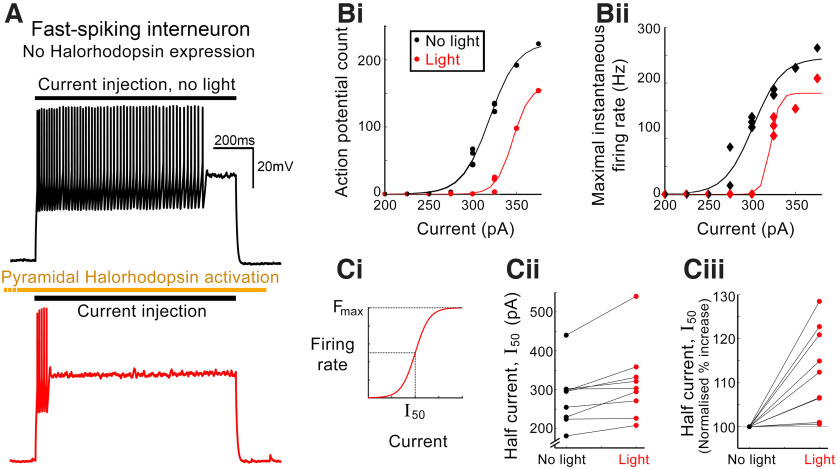Figure 4.
Indirect suppression of firing in nonexpressing, fast-spiking interneurons. A, Firing response to current injection (200 pA, 1 s) in a fast-spiking interneuron that did not express halorhodopsin in control conditions (black) or while there was concurrent activation of halorhodopsin in the local pyramidal cells. B, Input–output functions of a different fast-spiking interneuron, plotted as the total number of action potentials during the 1s period of current injection (Bi) or as the maximal instantaneous firing rate (reciprocal of the shortest interspike interval) (Bii). In both cases, the input–output function was derived without illumination (black) and then with concurrent activation of halorhodopsin in the pyramidal population (red, “light”). Ci, The input–output function (see Materials and Methods). Cii, Paired (light/no light) values of the half-maximal current (I50) for each cell, and Ciii, the same data, normalized to the no-light I50 (p < 10−6, paired t test).

